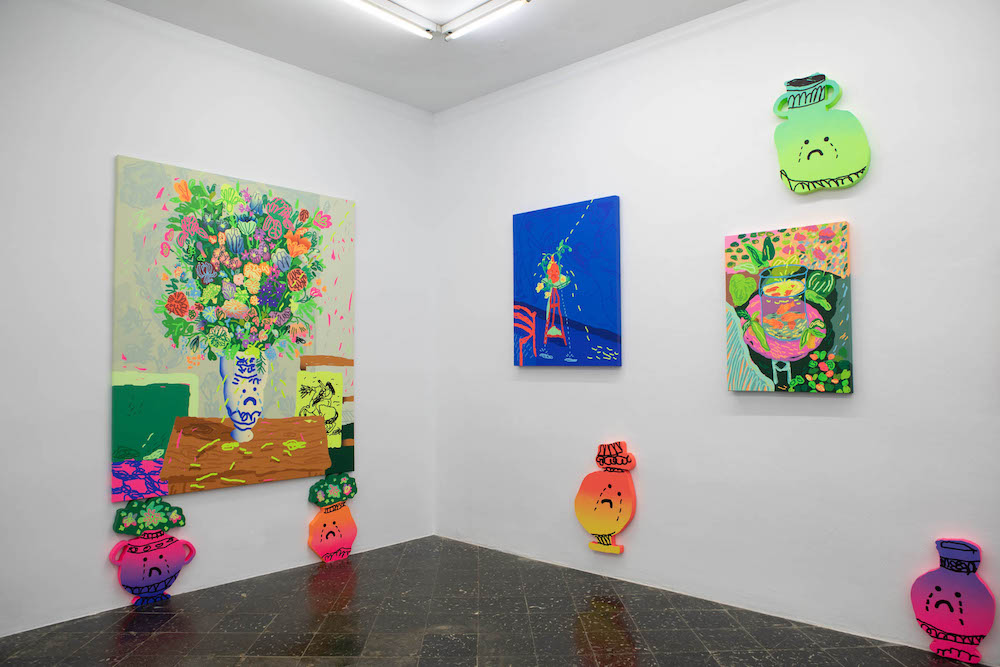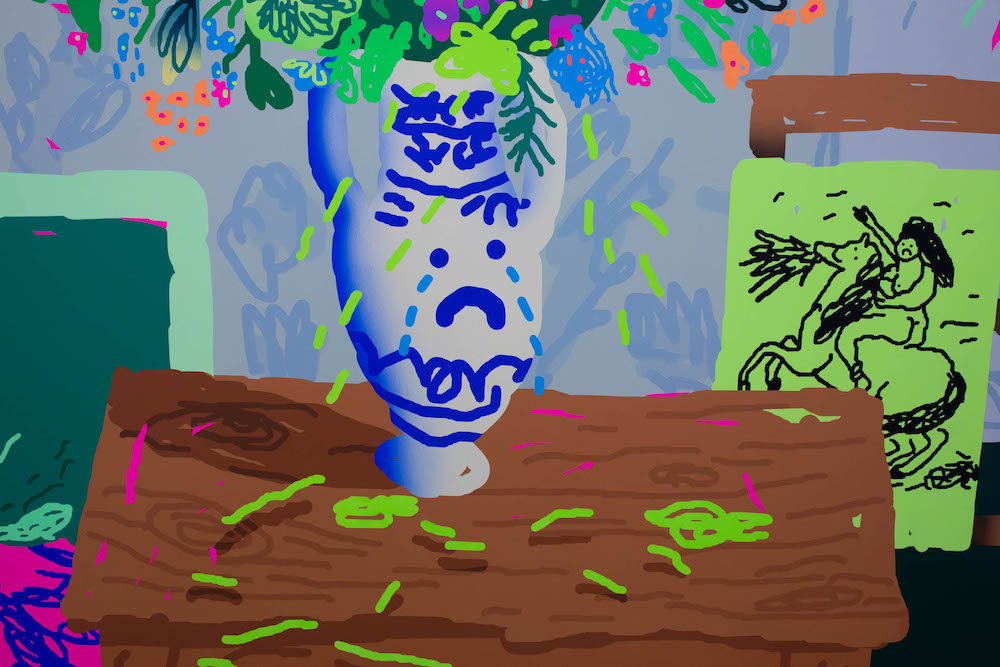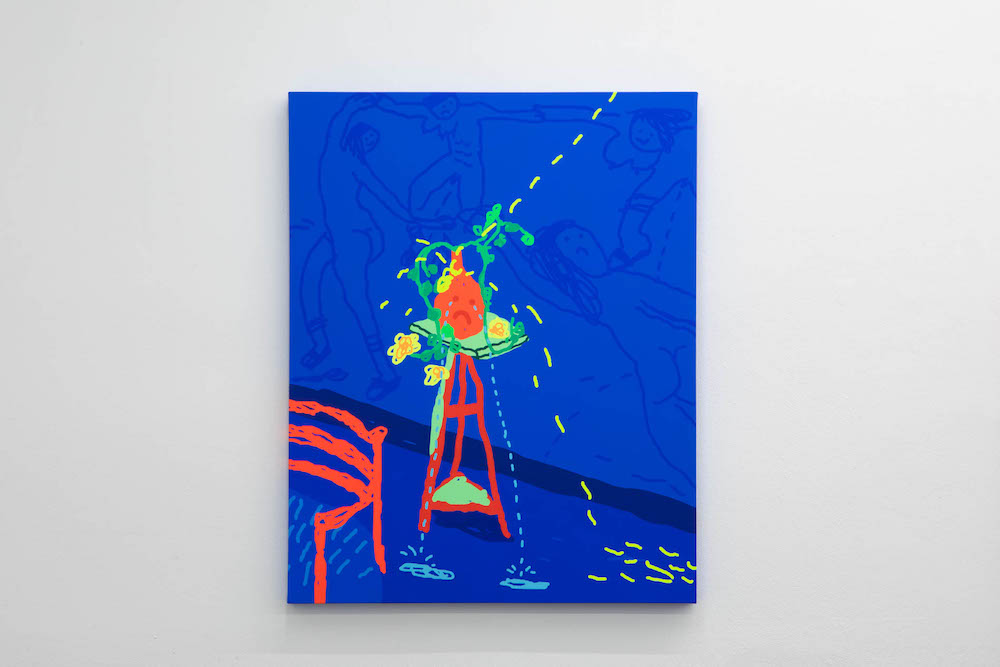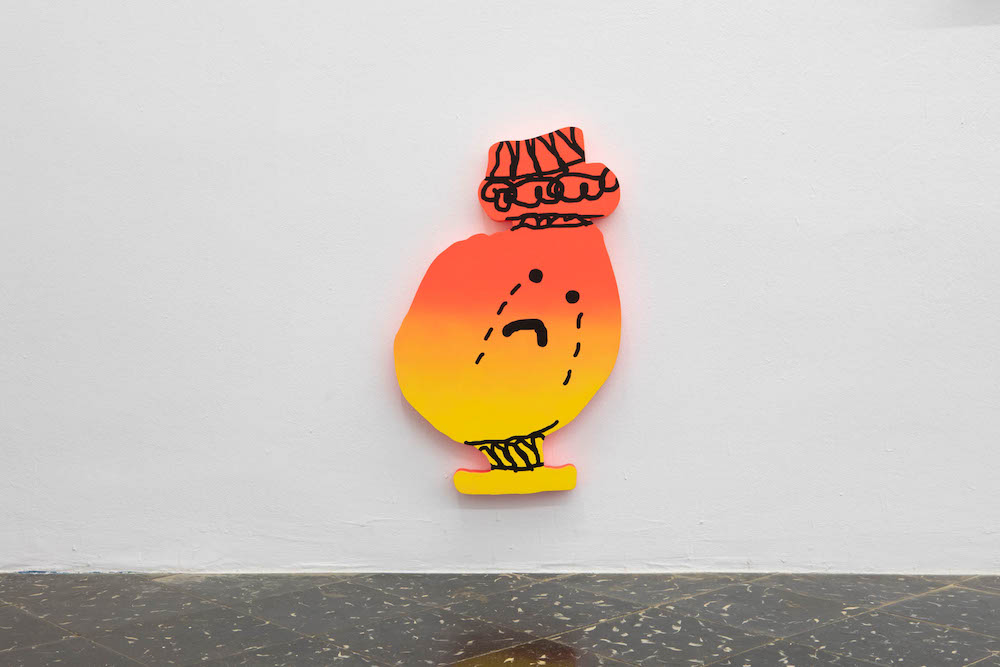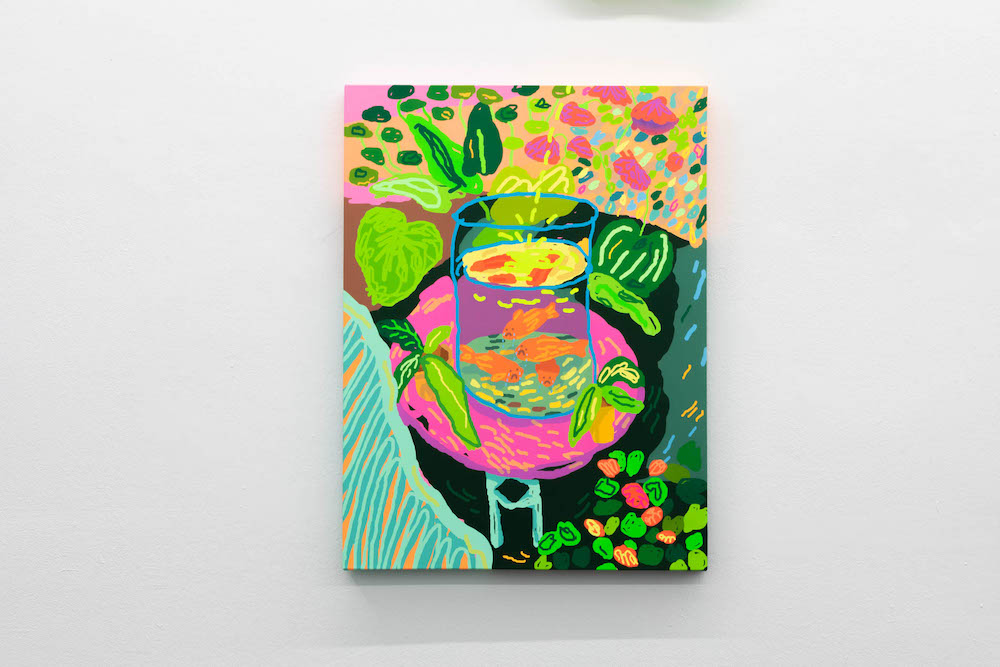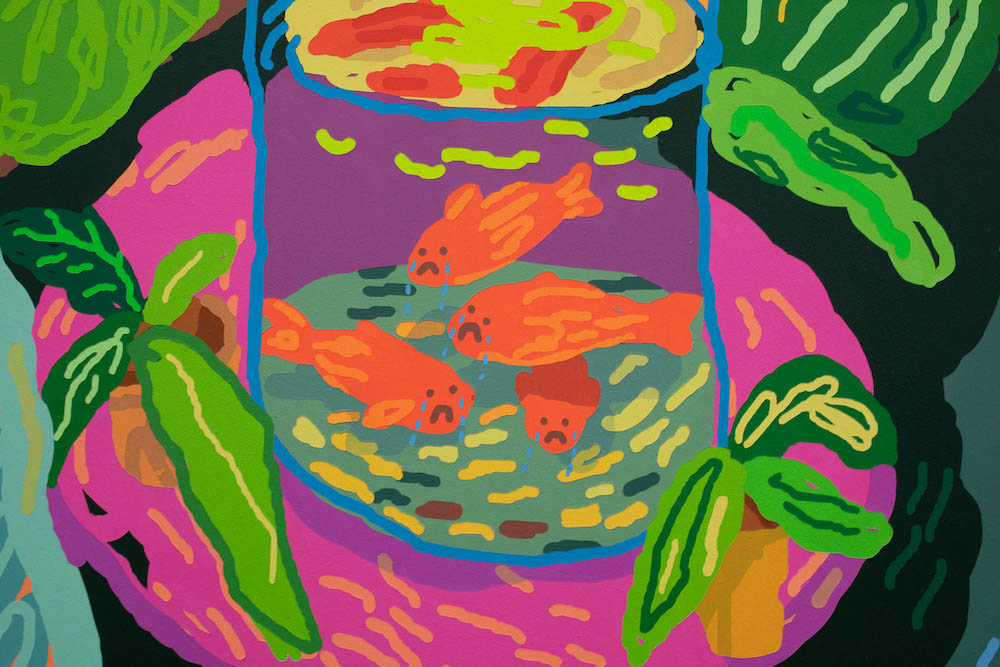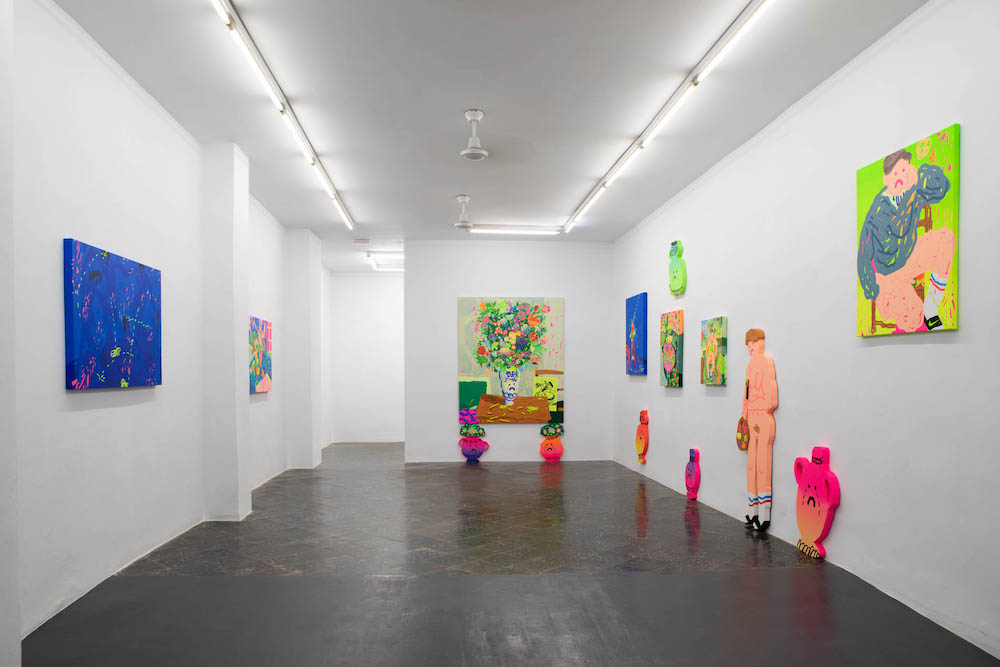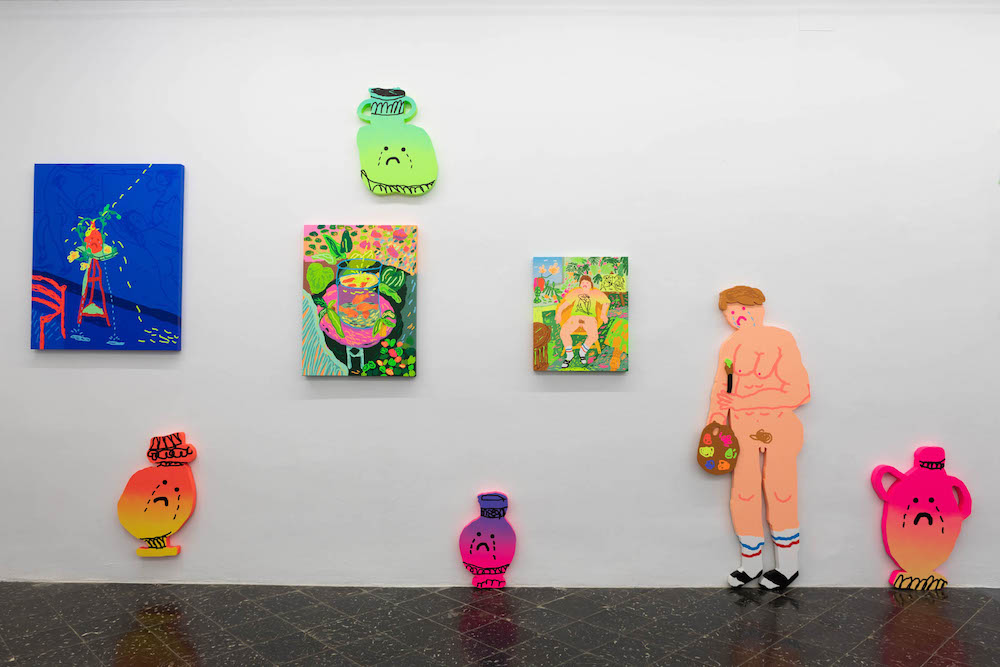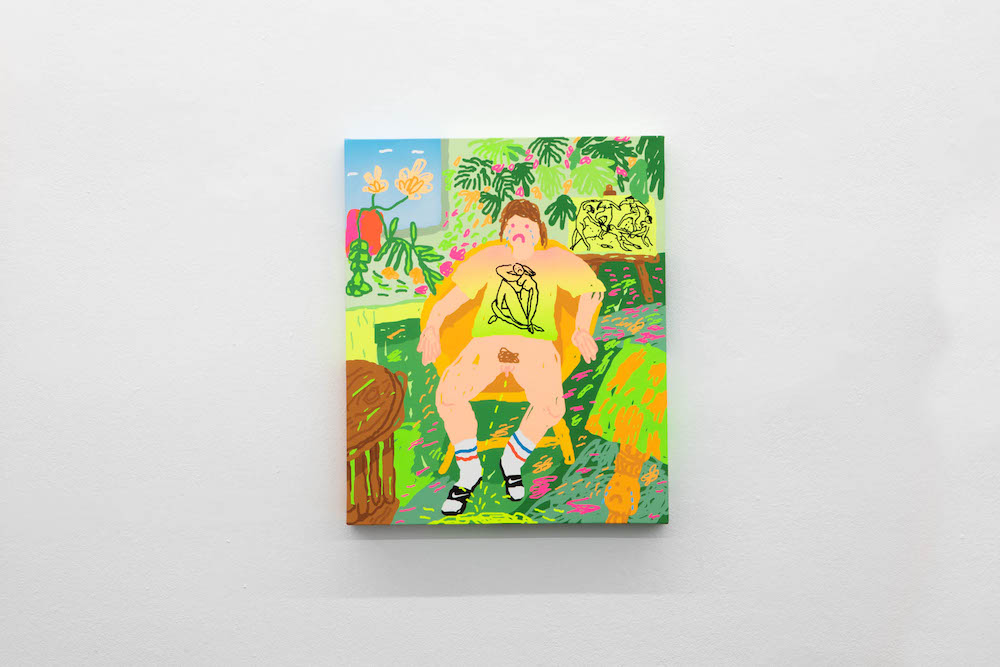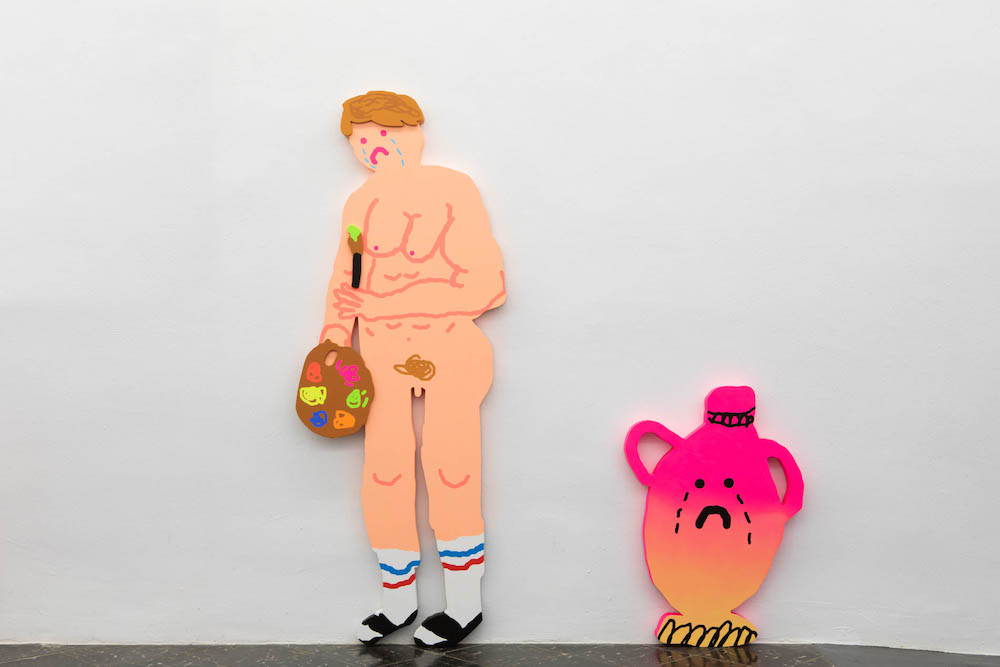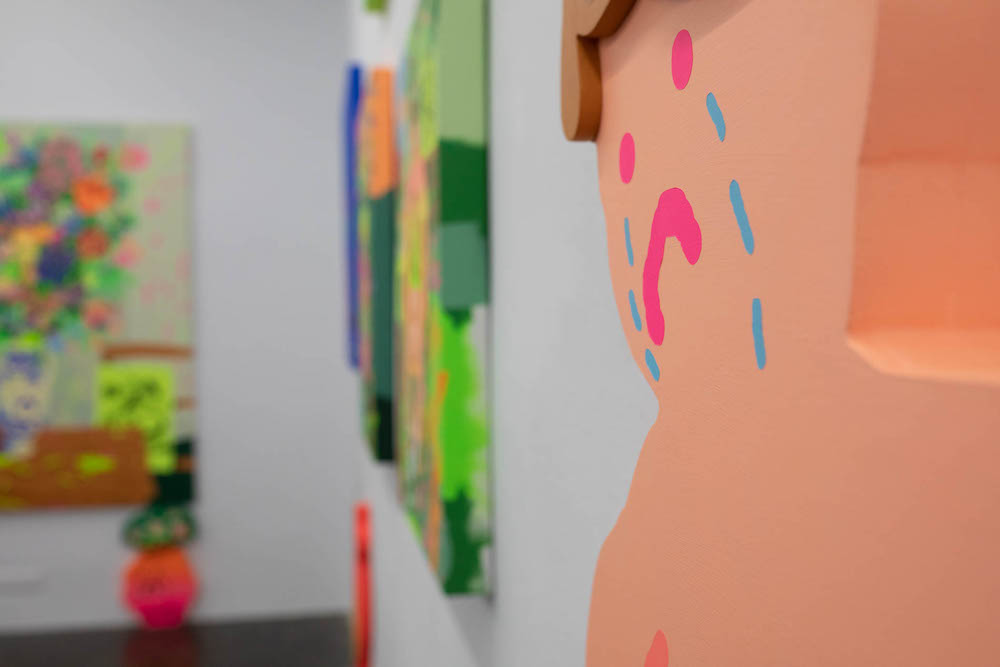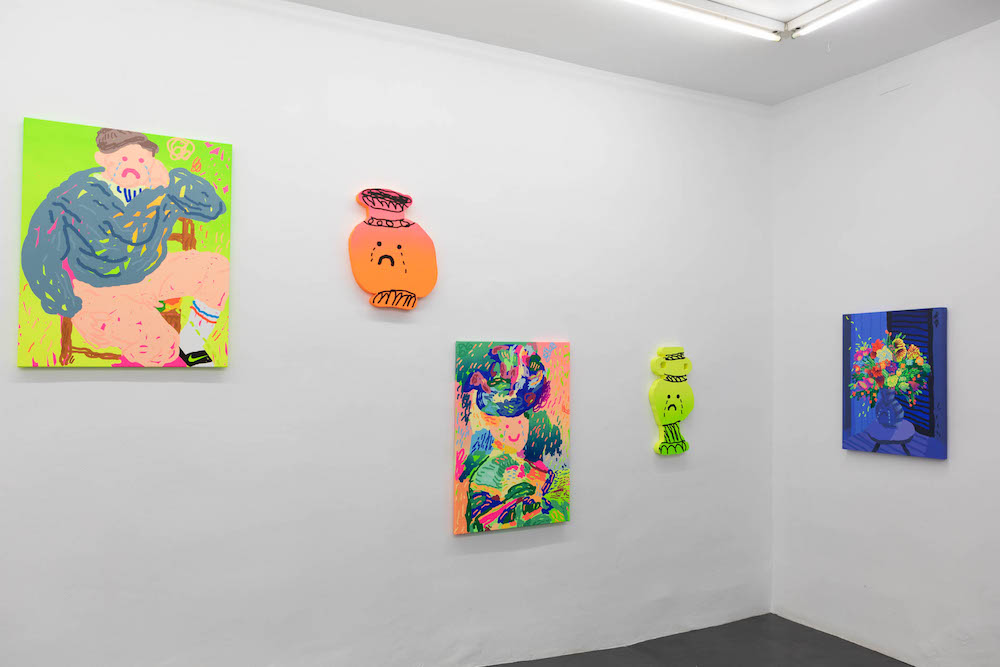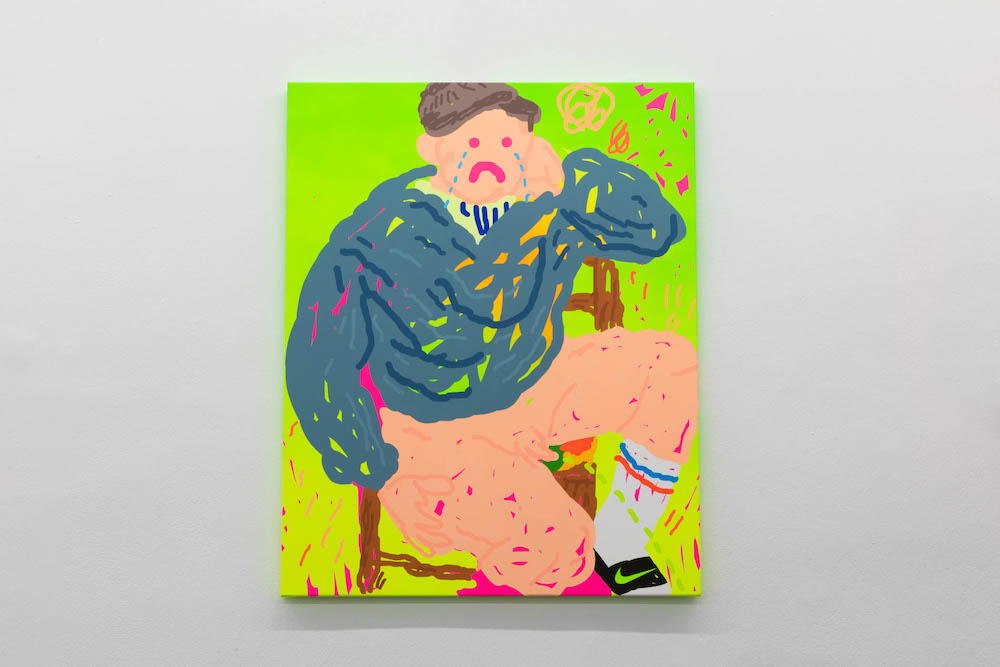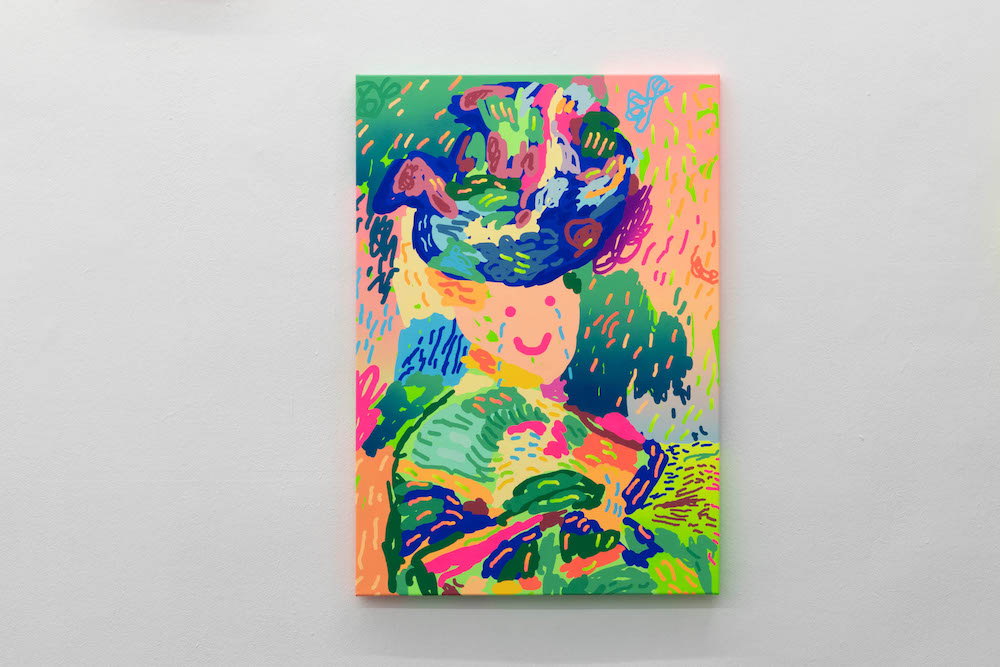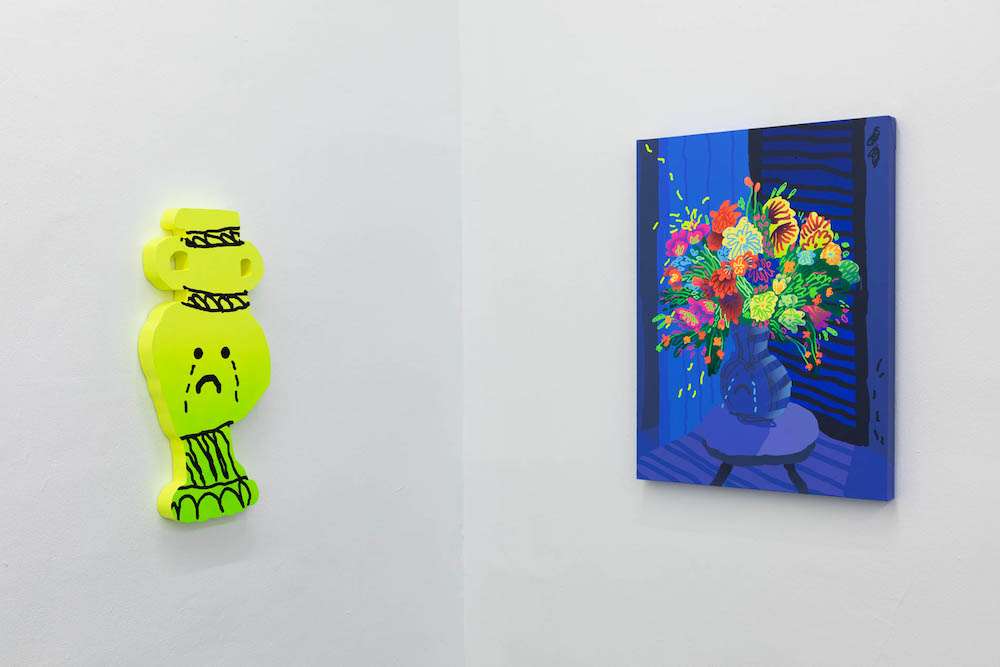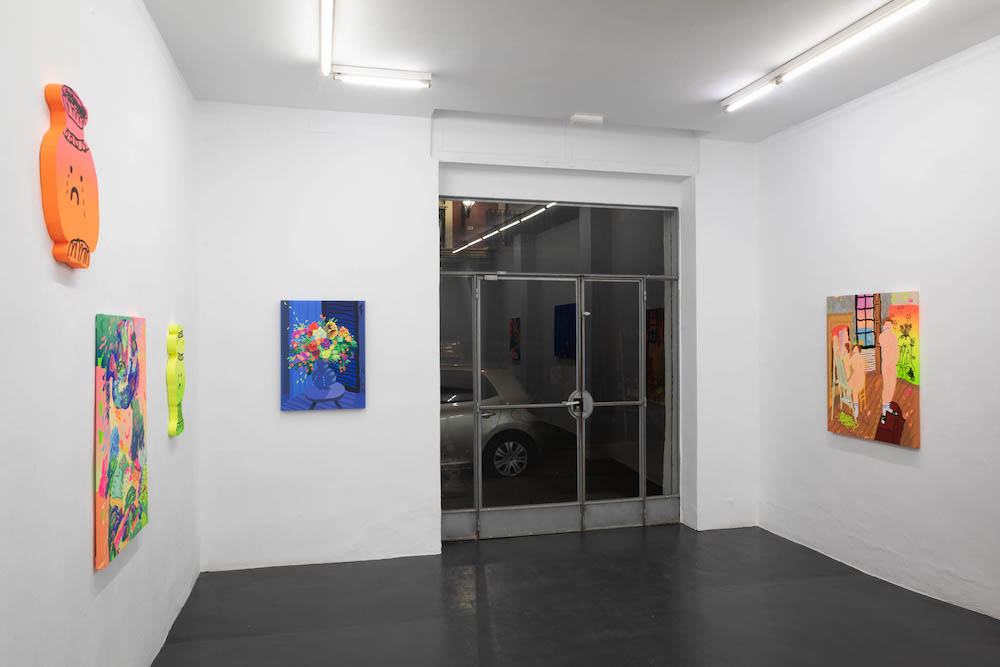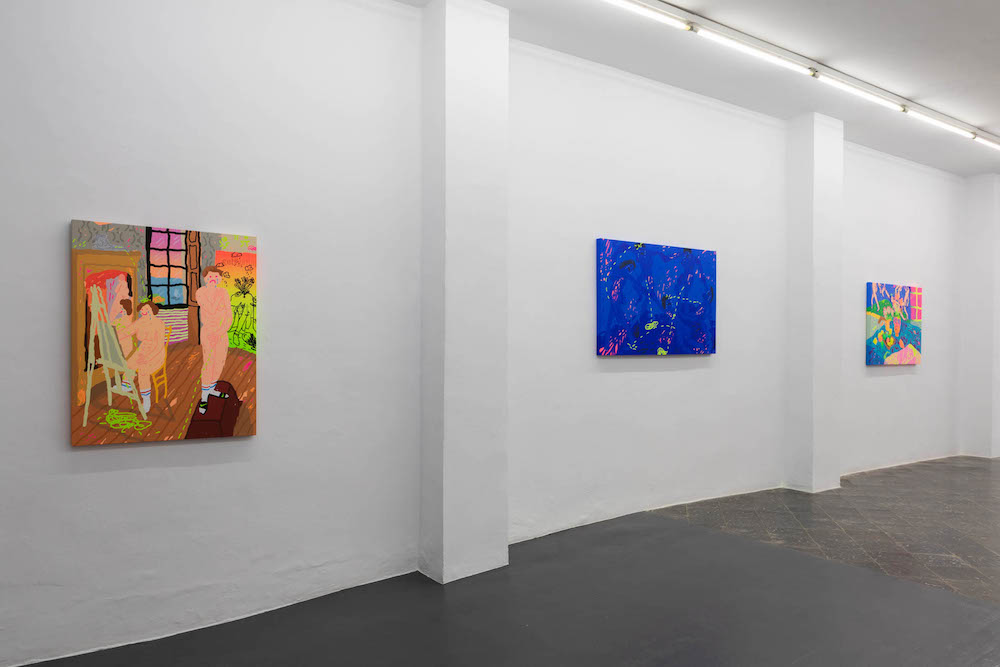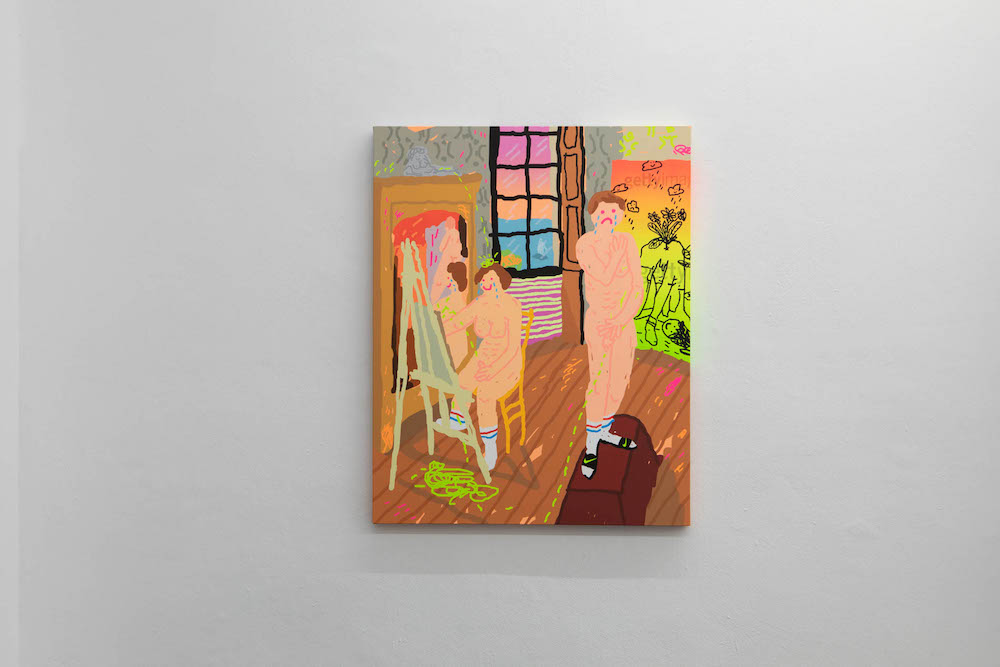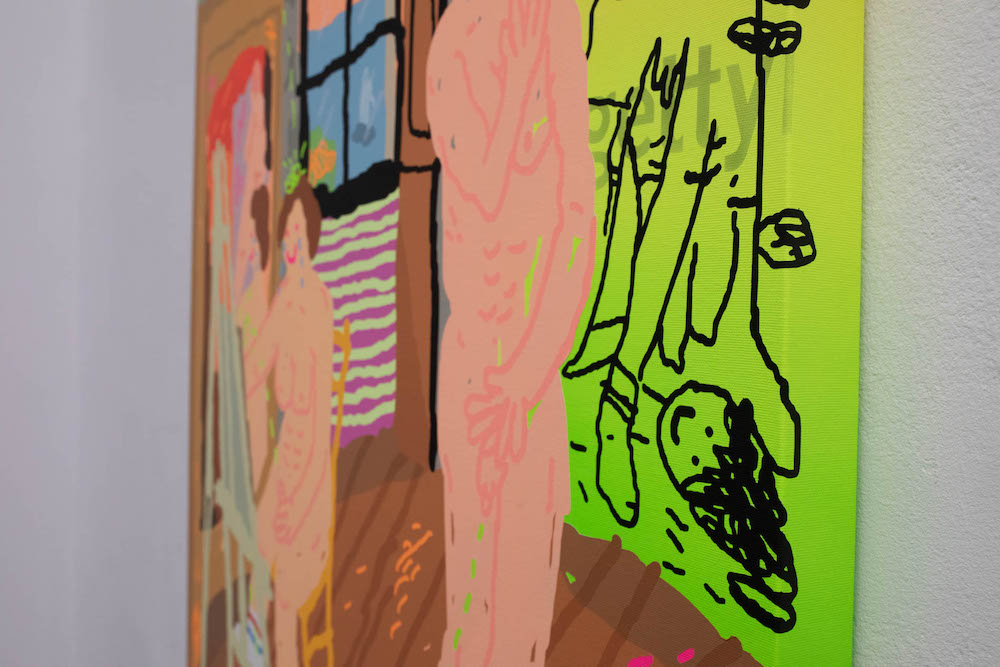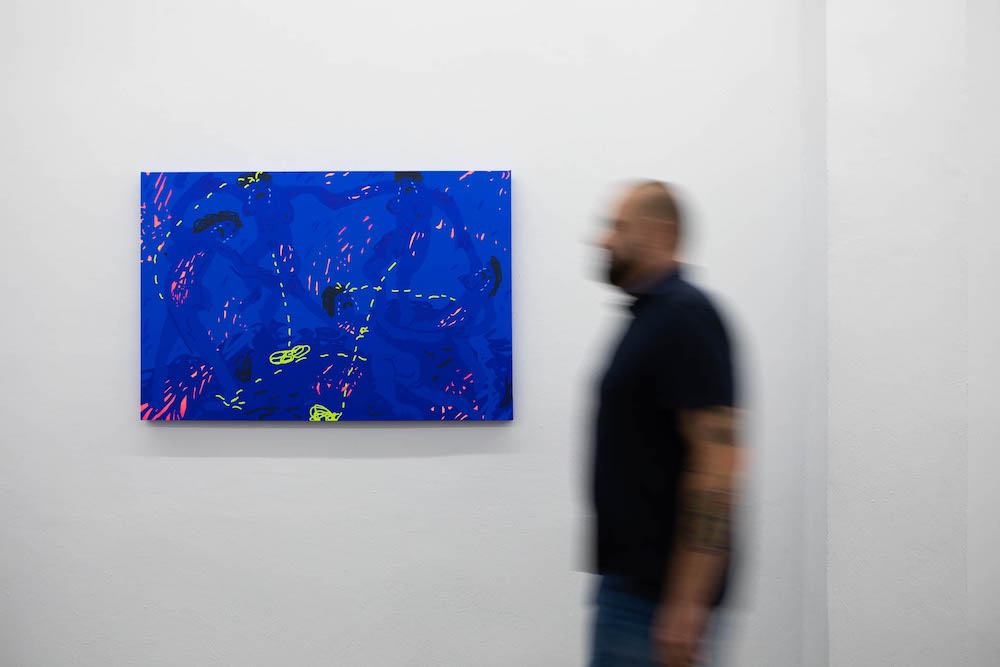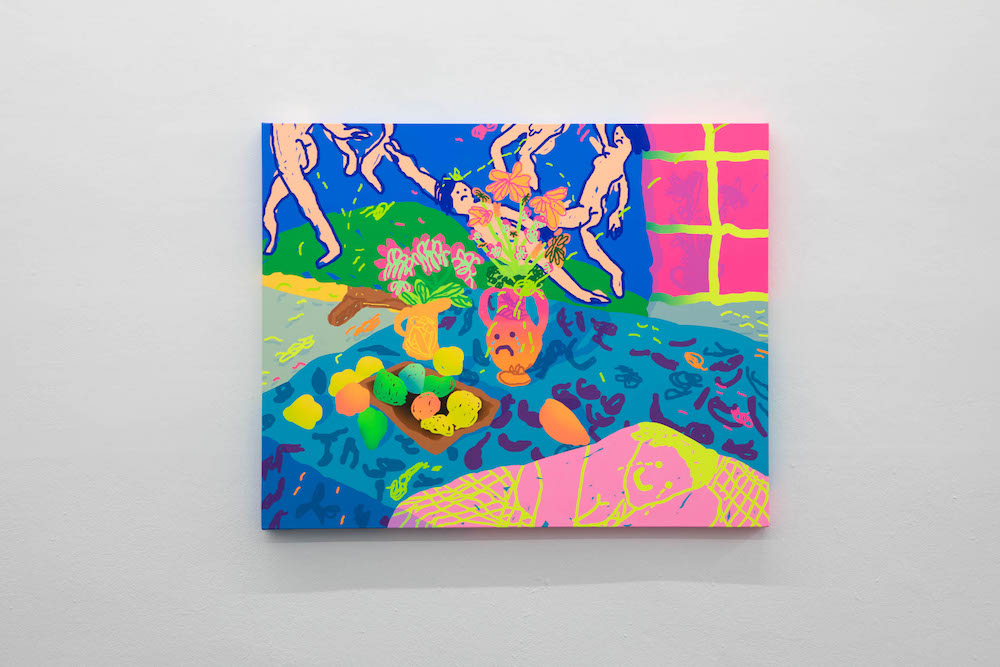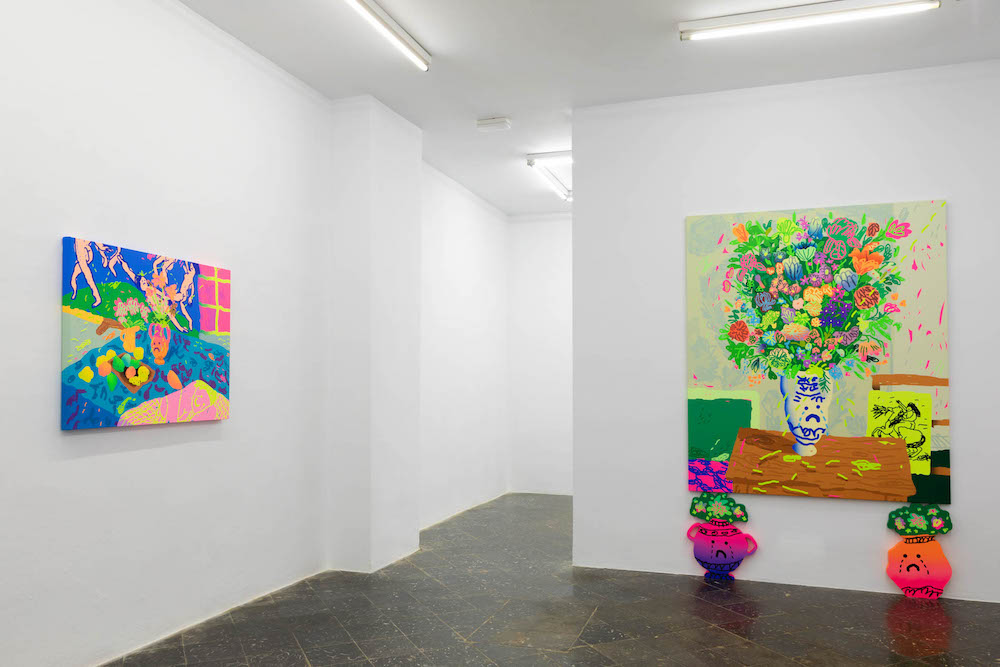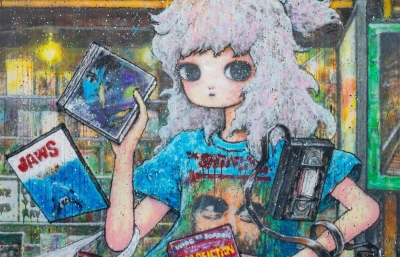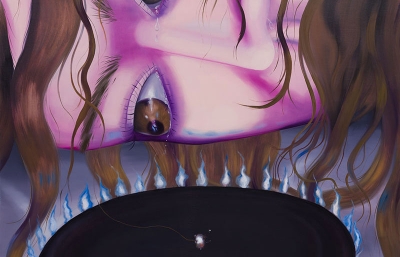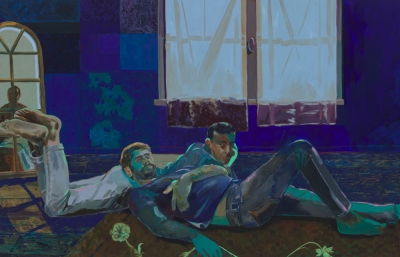".. See its really important for artists to be consistent because collectors want to be sure they’ve got a stable steve on their hands and not a wild kevin. as an artist ur shit has to be straight bro, no inconsistencies. art is about being consistent. so since like the time of galileo or who invented art or whatever artists have been examining their stool in order to see how their careers are going. its like palm reading or astrology but like exclusively for art and it works like 100 percent. its not pleasant but it works."
The Irish have a way with writing and irreverence, as demonstrated by Philip Gerard in the book that accompanies his solo exhibition Henry Matisse a Cool Life, showing through November 6, 2020 at Tuesday to Friday in Valencia, Spain. He also has a way with a paintbrush, so whether appreciating Gerald’s askance stance on a Matisse masterpiece or reading elaborate Instagram captions illuminating the "unknown" side of art history, his fluoro low-fi work and askew attitude offer a fresh contribution to contemporary art. For this exhibition, the Dublin-based artist interprets classics by one of the most famed Fauvists while adding his own off-the-cuff twists. When asked why Matisse, the answer is "why not?"
"There was no significance of picking Matisse and I can’t remember why I landed on him—it could have been any artist really. It’s more of a starting point than anything, and then I build the obnoxious fiction around that if that makes sense?" Drops of urine dribbling down still-life assemblages and subjects posing half-naked wearing socks and slides the images may not evoke grace and decoration, but the work obviously relies on the Frenchman's intense colorism and flattened images. Jumping off the canvas, Gerald creates a series of semi-sculptural pieces that flatten form to a new level, as he removes everything but the suggestion of a silhouette. Through a time-consuming technique that recreates the aesthetic of simple graphic software with crisp sharp edges, smooth gradients, and an abundance of hyper bright colors, his work gleefully indulges in Fauvism's use of strong color over the realism. Redefining curation and formatting, the work is presented with abandon (a stream of consciousness nod to Henry James?). Scattered sculptural pieces and paintings displayed close to the ceiling taunt and flaunt in fabulous Fauvist form. —Sasha Bogojev



